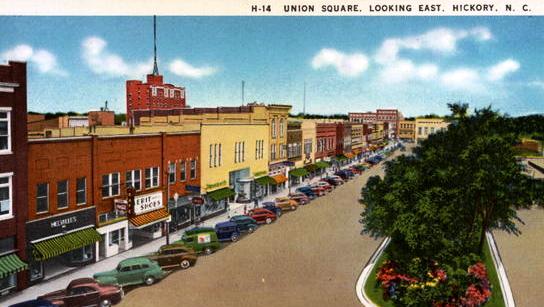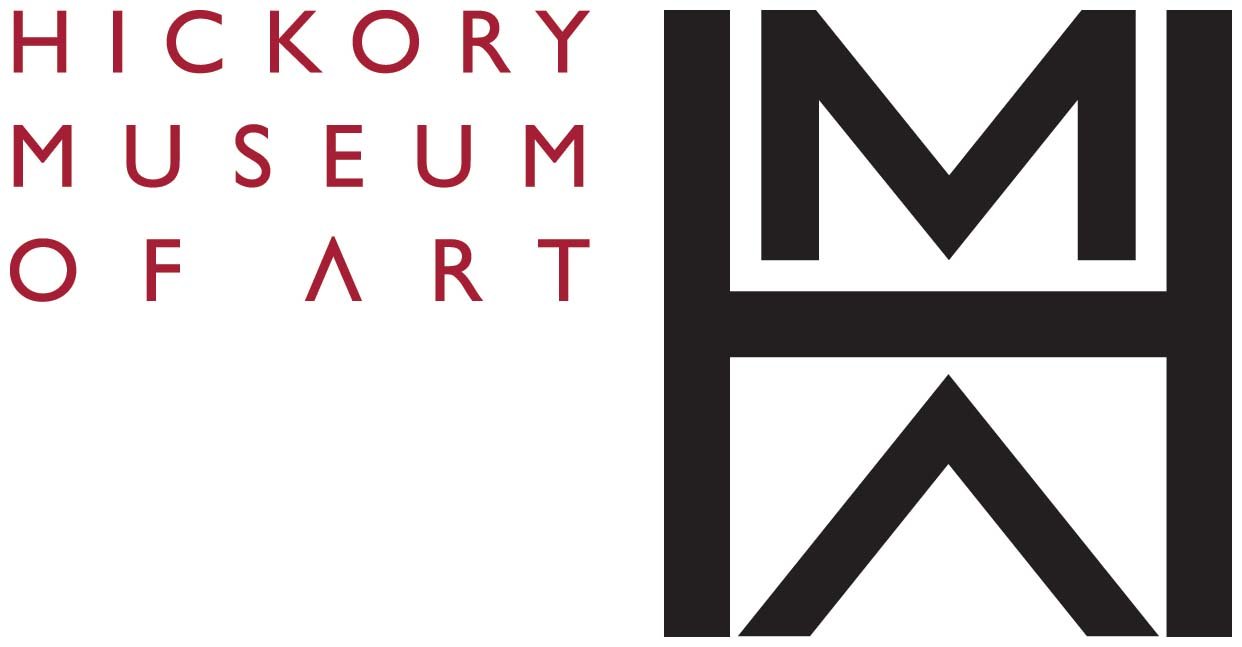History of Hickory Museum of Art
Hickory Museum of Art (HMA)was the fulfillment of the vision and ambition of Hickory resident Paul Whitener, a Duke University journalism student and football player who grew into an accomplished painter of portraits and the North Carolina mountains.

In the 1940’s, Hickory was a leading cultural center for a city of its size (about 15,000 inhabitants), and Paul felt that the city needed a visual arts center. A group of “conscientious citizens” (as Paul referred to them) assembled in September of 1943 to discuss the possibility of organizing an art association in Hickory. By November of that year, though it did not yet have either a collection or a physical location, the Hickory Museum of Art Association borrowed some local art and held its first exhibition in the vacant Bradshaw office building in downtown Hickory, drawing about 600 viewers during the relatively brief run. In February of 1944, still without either a building or a collection of its own, HMA held a celebratory ceremony in the ballroom of the Old Hickory Hotel where the Museum was publicly recognized and chartered by North Carolina Governor Clyde Hoey. And that was the official beginning of the second oldest art museum in North Carolina. (Charlotte’s 1936 Mint Museum was the first.)
W.W. Bryan House.
Paul and his artistic contacts in New York City, chief among them the painters Wilford S. Conrow and Henry Hobart Nichols, concentrated on American art that at the time was not favored by collectors and , thus was affordable. This was also consistent with Paul’s vision which, in his own words, was to first and foremost "embrace all the arts and crafts of the upper Piedmont region of North Carolina."
Within a year, the Museum had bought a dozen paintings and had outgrown the Bradshaw Building and, after a brief temporary stay in a local bank building, moved into the white clapboard W.W.Bryan house on Third Avenue. This was the Museum’s home for the next 14 years. It served that function well for the most part, except perhaps the time when the floor of the main gallery which, according to Pauls' niece Julie Cline "would probably hold 50 people packed in like sardines" caved during a crowded reception. As Paul's steadfastly supportive and collaborative wife Mickey reminisced in 1984, "Suddenly, the floor collapsed and we were standing two feet lower. ... The whole floor was leaning to one side like an earthquake had hit the house. It was something to see." Fortunately no-one was hurt.
In 1960 HMA moved into its third home, the former office building of Shuford Mills on the corner of 3rd Street and 1st Avenue NW. “I thought it was heaven when I moved into that third location” remembered Mickey in 1994. “It was warm in the winter, cool in the summer and gorgeous year ‘round.” Here HMA was able to further develop its programs, including art classes that had already been initiated modestly before the move. The Museum was also able to expand the continuing into the present annual School Art Show, an early project of Paul’s. “Paul thought that the show would develop the children’s interest in art early on, so that they would continue to have an appreciation of the arts as adults. … [The show also] promotes parental awareness of the Museum because if their child has a picture in the show, the parents, the grandparents, sometimes even the great-grandparents are all coming to see it.” How right he was.
By the early 1980’s, the Museum again was in need of still-larger quarters, and to that end raised $650,000 towards building its own free-standing space. At that same time, however, the Hickory School Board announced that it intended to demolish the former Claremont High School building (by then re-named Hickory High School). Instead, Buck Shuford, part of the Shuford family whose members were strong supporters of HMA since its beginnings, led a group of other civic-minded Hickory men and women to turn the building into the arts center it is today by spearheading a drive to raise 2.6 million dollars towards its renovation. (Here, the old gym floor is being cut to install the curved stairway in the Coe Gallery.)
The focus of Hickory Museum of Art's collection continues to be American art. HMA aims to be a cultural center, educational resource, tourist destination, and economic development tool for the Catawba County region, the state of North Carolina and beyond. Its current mission is "To bring people together and inspire creativity through the power of art."
Since 1991, HMA is accredited by the American Alliance of Museums, which means that it operates according to the highest established museum standards. HMA is one of only a small percentage of all American museums so distinguished.
On February 3rd 2024, HMA celebrated its 80th anniversary with a glorious Gala event glittering with 1940’s-reminiscent ballgowns, dance music in the two-story main gallery surrounded by art from the museum’s collection, happy crowded socializing in the smaller galleries, and champagne.
First published July 13, 2018






